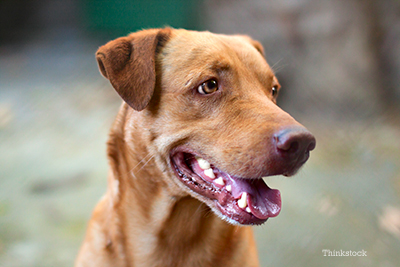
Overview
Dogs are tough on their teeth. They spend their entire lives chewing on things—things we want them to chew on and things we don’t. Because of this, your pet’s teeth could start to show wear and tear as he ages. Some tooth wear is expected, but in some situations the wear can be extreme, resulting in an abnormal loss of the top layer of the teeth. This is called attrition.
For dogs, the most common teeth to be affected by attrition are the incisors.
As a tooth wears down, its pulp (or root) can become exposed. The dog’s body prevents this by covering the root with a protective layer called dentin, which appears as a dark spot in the middle of the tooth.
Symptoms
If your pet suffers from severely worn teeth, you most likely will notice the wear and tear when he “smiles,” exposing his teeth. Additionally, sometimes pain is associated with the worn tooth.
Diagnosis/Treatment
While a worn-down tooth may not pose serious health problems for your dog, other more dangerous oral conditions could exist. Routine visits to your veterinarian are very important, and an oral exam can identify issues such as broken teeth, oral tumors, periodontal disease, stomatitis, and other problems that pose a much more serious health risk. In fact, approximately 80% of our canine friends suffer from periodontal issues by age 5!1
Prevention
Unfortunately, there is no prevention for attrition. Routine oral exams will help your veterinarian monitor your pet’s teeth and keep an eye out for other more serious oral problems. To learn more about your dog’s oral health, watch the video Cleaner Teeth, Healthier Dog.
For more information, talk with your veterinarian—your key resource for information about the health and well-being of your best friend.
Reference:
- Harvey CE, Emily PP. Periodontal Disease. In: Harvey CE, Emily PP, eds. Small Animal Dentistry. St. Louis, MO: Mosby-Year Books; 1993:89–144.
If you have any questions or concerns, you should always visit or call your veterinarian – they are your best resource to ensure the health and well-being of your pets.
